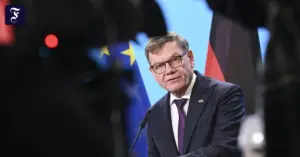
The little girl is going to die. No tension. One of the advantages of the tremendous response the film generated during its appearance at countless festivals where it received applause and awards everywhere was that it publicized the outcome of the tragedy it recreated.
“Tragedy”, actually in the sense that a terrible event becomes a manifestation of a much greater horror. And even tragedy in the sense of thoroughness of construction, organization of time and space, stubbornness of the sequence of events.
But it is not a tragedy in the sense that the fatal outcome is the result of fate. There are no abstract or superhuman entities here, but very real killers: Israeli soldiers, engaged in a genocidal war that is still ongoing.
Tension and non-stop
On January 29, 2024, the Palestine Red Crescent, in the West Bank, received a telephone call from a 6-year-old girl. He was in the car where all the other passengers died after being machine-gunned by an IDF tank.
Terrified, surrounded by the bodies of his family, he begged for help for several hours, talking to four volunteers who tried to reassure him while trying to get permission for an ambulance to come and pick him up. When this authorization is finally obtained, they follow the vehicle’s progress on their screen, located via GPS.

Played by Saja Kilani and Motaz Malhees, doctor Ranah Hassan Faqih and volunteer Omar A. Alqam who interact with Hind Rajab try to convince him. | 2nd day of party
Until, shortly before the rescue team arrived, the Israelis killed the little girl and two rescue ambulances, Yusuf Zeino and Ahmed al-Madhoun.
From this series of events, we hear the real trace: the voice recording of this child named Hind Rajab Hamada, a recording archived by the Red Crescent. We see a reconstruction of this sequence of events, by actors, who repeat what Hind’s interlocutors said and did.

On the screen, the audio signals as we hear Hind Rajab’s voice pleading not to be abandoned. | Screenshot of Jour2Fete Distribution via YouTube
Not the other way around, but with the absence of tension, Kaouter Ben Hania’s film becomes an important film. This is due to the extreme tension between the dramatic violence seen and the knowledge of the stubborn nature of what happened – what has been happening for more than two years to tens of thousands of men, women and children, and which continues today despite the ceasefire.
This violent tension concerns not only the atrocities committed by Israel in Gaza, but also, most importantly, blindness and helplessness, here and now. They accused world leaders of being actively involved with Zionist criminals. They underscore the mixture of paralysis, indifference and fatalism that the majority of citizens experience almost everywhere, but especially in France.
The importance of duration and form
By combining documentary resources (sound recordings) and fiction (scenes replayed by actors), the Tunisian filmmaker constructs a proposal whose strength is also determined by the duration of the film.
In ten minutes, the story of Hind and those who tried to save her will be an emotional punch, shocking in its violence.
In an hour and a half, it is based on strong emotions that are in no way diminished by the absence of tension, but instead address the real issues, an invitation to question a series of behaviours, which do not just concern the intersection on the corner of two ash-red streets in Gaza, where a child suffocates in terror surrounded by the corpses of his family.
With this film, Kaouther Ben Hania continues the work of singular research through cinema, work that develops the proposition of his two previous films, Challat Tunis And Princess Olfa. A work of sense and thought, faith and reason, in which the problematic use of fictional and documentary contributions explores new paths, opening up other ways of understanding.
It seems inappropriate, even indecent, to focus attention on the cinematographic process given the horrors depicted in the film, the horror of the events themselves, and the context of mass crime in which the film takes place.

Actresses and actors to embody the reality of events and feelings. | Party Day 2
But when faced with the fact that the accumulation of cruelty always ends up being the cause, a phenomenon that we know well and that the media repeats endlessly, it is precisely the opposite that it is possible, and desirable, that formal research maintains the singularity of the view, our outlook, the singularity of sensibility. Seventy years ago, this was the big lesson of this Night and Fog by Alain Resnais, which was criticized for its formalism. That still applies today.
Based on real facts, which have searing testimonies, the Tunisian filmmaker crafts a series of choices, which are not as simple as they seem, regarding what is said and kept secret, shown and not shown in front of the camera. He chooses framing and duration, his actors and actresses embody in an integrated manner what they interpret, say and do.
None of this will revive Hinduism. None of this will stop the ongoing genocide. But it succeeds, in the only place a film can do, by moving audiences internally, at least those open enough to watch it, or convinced of the legitimate condemnation of Israel’s crimes uttered by the highest authority of international justice. Because there are still many things that need to be understood and questioned, even when you are a potential viewer of such films.
This moves things along, intellectually and emotionally, including (questioning) the ways in which the filmmaker mobilizes. In what Rajab Hind Voice not just a moving film, but a necessary film.

Rajab Hind Voice
by Kaouter Ben Hania
with Saja Kilani, Motaz Malhees, Amer Hlehel, Clara Khoury
Duration: 1 hour 29
Released November 26, 2025





